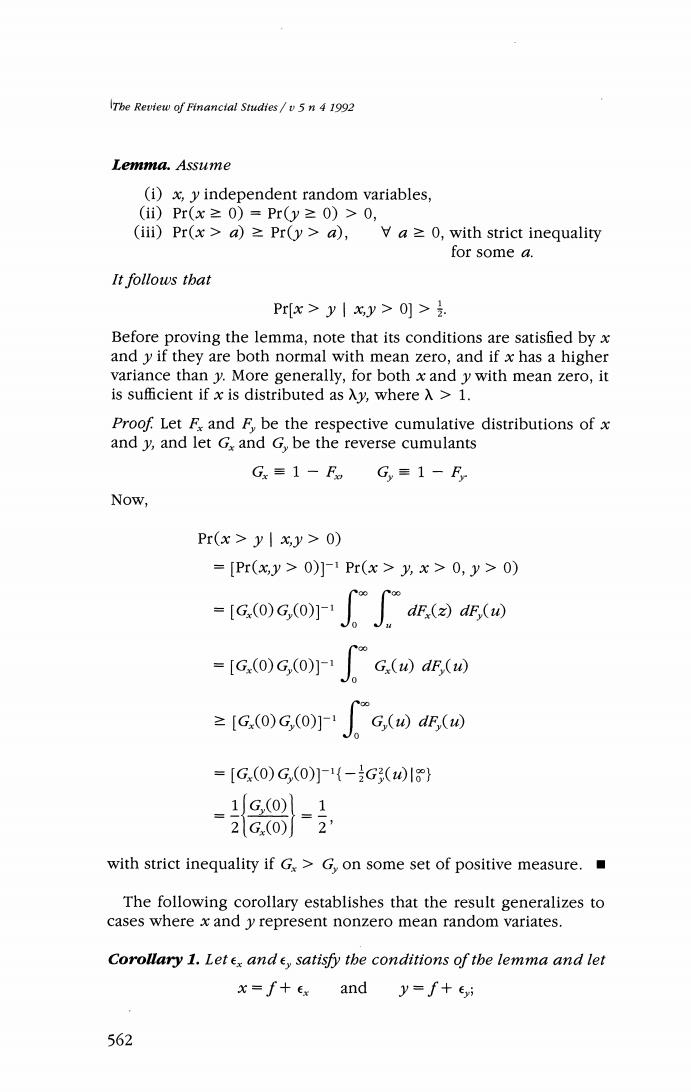正在加载图片...

Tbe Review of Financial Studies/v5n 4 1992 Lemma.Assume (i)x,y independent random variables, (ii)Pr(x≥0)=Pr(y≥0)>0, (iii)Pr(x>a)≥Pr(y>a),廿a≥0,with strict inequality for some a. It follows that Pr[x>yxy>0]> Before proving the lemma,note that its conditions are satisfied by x and y if they are both normal with mean zero,and if x has a higher variance than y.More generally,for both x and y with mean zero,it is sufficient if x is distributed as Ay,where A 1. Proof.Let F and F,be the respective cumulative distributions ofx and y,and let G,and G,be the reverse cumulants G=1-F。G,=1-F Now, Pr(x>yx,y>0) =[Pr(x,y>0)]厂1Pr(x>y,x>0,y>0) =IG.(0)G0-八∫ df,(z)df,(0 =a,ocoI: G.()dE() ≥G.0)G,0] G,(0dE,() =[Gx(0)G,(0)]1{-2G(w)18} -1go=1 2G(0)21 with strict inequality if G>G,on some set of positive measure. The following corollary establishes that the result generalizes to cases where x and y represent nonzero mean random variates. Corollary 1.Lete ande,satisfy the conditions of tbe lemma and let x=f+ex and y=f+e; 562